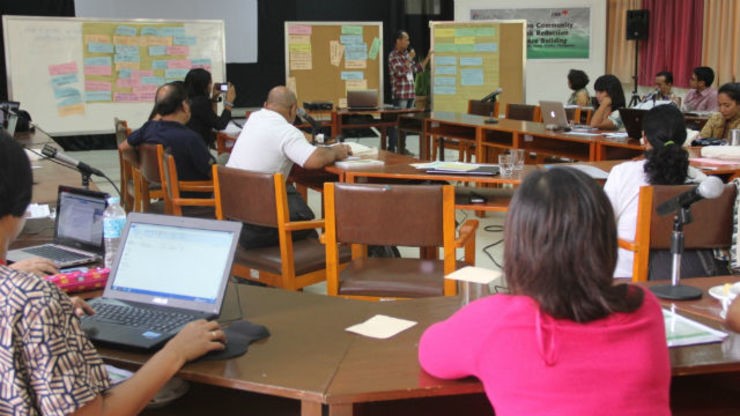“In the Philippines hazards are normal,” Liza Bernardo Zurbito of Children International said.
But she stressed, “They only become disasters when we are not prepared.”
The wealth of experiences on the ground in these two countries was captured during the Conference on Community Disaster Risk Reduction and Resilience Building from July 2-4 in Silang, Cavite. The International Institute of Rural Reconstruction (IIRR) and Give2Asia hosted the conference, with the belief that smart, contextual, and community-based interventions performed by local partners are the most effective way to prepare for hazards, mitigate their damage, and ultimately save lives.
The conference brought together 40 participants working in disaster zones and vulnerable communities in the two countries to share knowledge and best practices across communities and countries.
The conference also facilitated donor education of international non-governmental organizations (NGOs) and foundations through knowledge briefs on indicators and elements of community resiliency.
The participants were mostly concerned about community resilience challenges, pathways, and sustainability.
Challenges to community resilience
Among the many challenges in DRR – as discussed in the conference – are building local leadership, combating environmental degradation, changing mindsets, resolving local conflicts, and developing partnerships with government.
Another concern that arose was the need to increase funding for DRR and CCA, which receive very little funding compared to disaster relief and response.
“One big problem we face is mobilizing funds for Disaster Risk Management,” Suryono of Yayasan SHEEP Indonesia said.
“For emergencies there is no problem, but for long term social change, it is much more difficult,” Suryono said.
According to the United Nations Development Programme (UNDP), investing $1 in preparedness saves $7 in relief and recovery costs. But according to the Overseas Development Institute, some of the world’s poorest countries receive $160,000 in relief and recovery funding for every $1 in preparedness and resiliency funding.
“Giving to disaster relief and response is an emotional response from donors to devastating news,” Matt Grager, Director of the Disaster Preparedness Program at Give2Asia, said.
He added: “But giving to DRR and CCA requires educating donors on its importance to both communities and donors’ own priorities. That’s exactly what we are trying to achieve here.”
Sustaining resilient communities
Alfred Arquilano, former Mayor of San Francisco, Camotes Island, Cebu, spoke about sustaining community resilience in his keynote address on the first day.
Arquilano has been recognized as a Champion of Community Resilience by the United Nations International Strategy for Disaster Reduction for his DRR work that leveraged his local Purok system.
When San Francisco was struck by Typhoon Yolanda in November 2013, the community suffered zero deaths.
His work of building support services in exchange for waste management and sustainable gardening at the household level built the trust and civic activity necessary to weather the storm.
“Building resilience must begin at the household level,” said Arquilano.
“We have to increase the level of awareness and enable the conditions to build resilience and equip community with knowledge and enhance adaptive capacity at household level,” he added.
The conference is a part of the joint Give2Asia and IIRR NGO Disaster Preparedness program.
All materials, presentations and information from this conference and future conferences in Bangladesh and Myanmar will be made publicly available on Give2Asia’s website. – Rappler.com
Source: Rappler | 10 July 2014

 LEARNING. An Indonesian expert talks about success indicators of disaster resilience during the conference. Photo: Give2Asia
LEARNING. An Indonesian expert talks about success indicators of disaster resilience during the conference. Photo: Give2Asia











